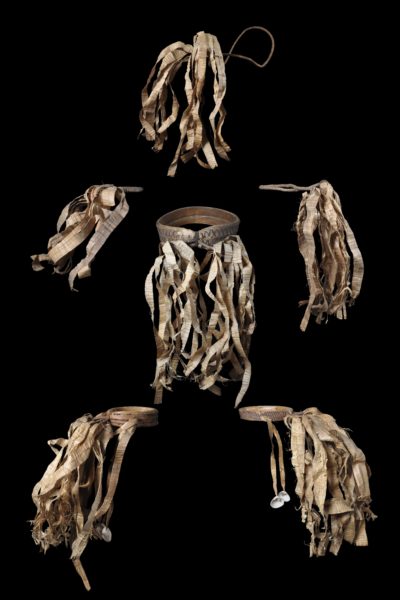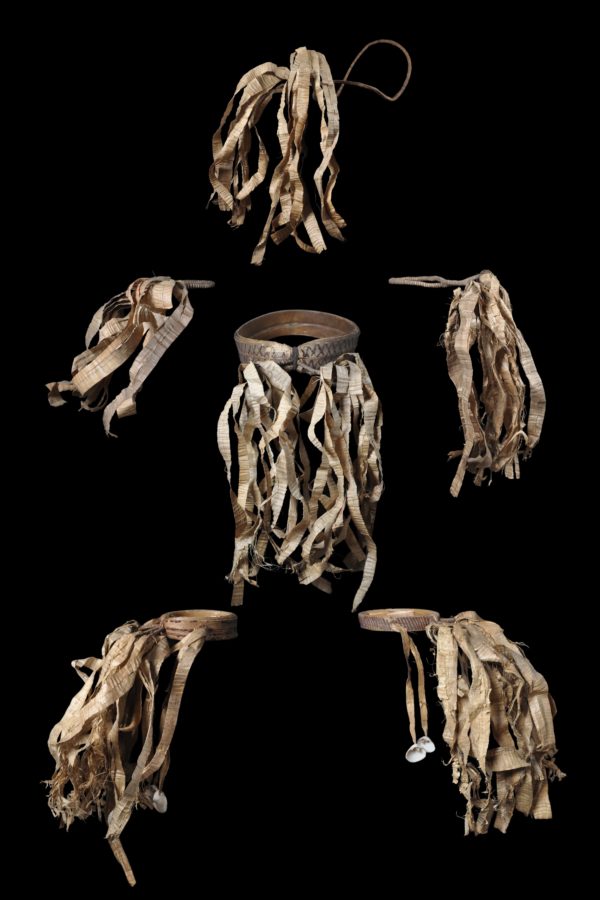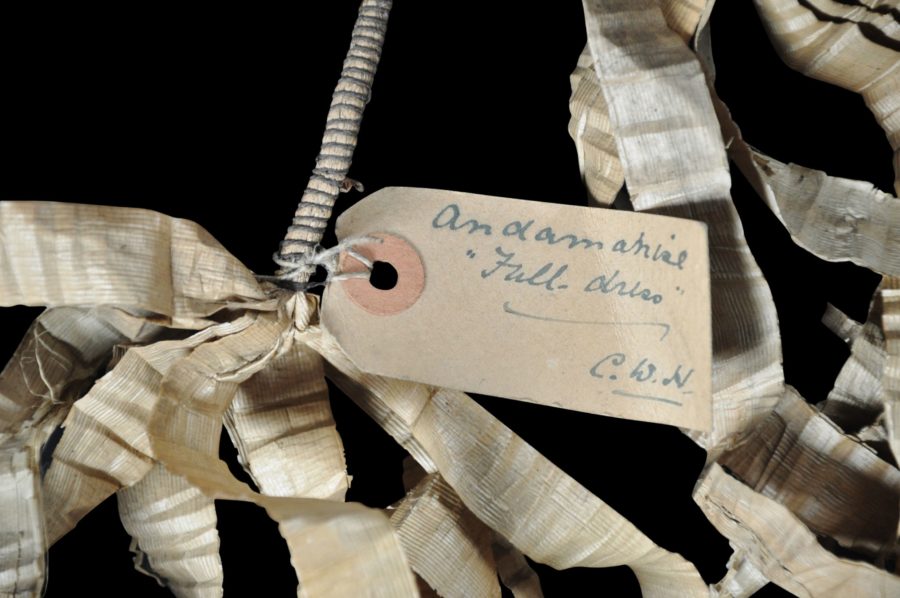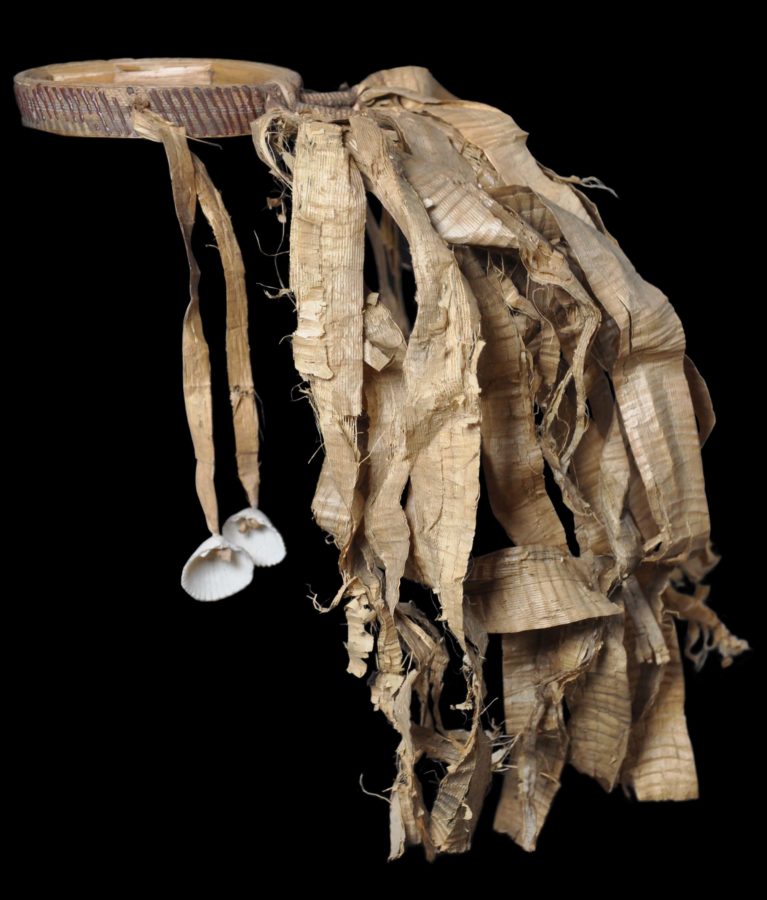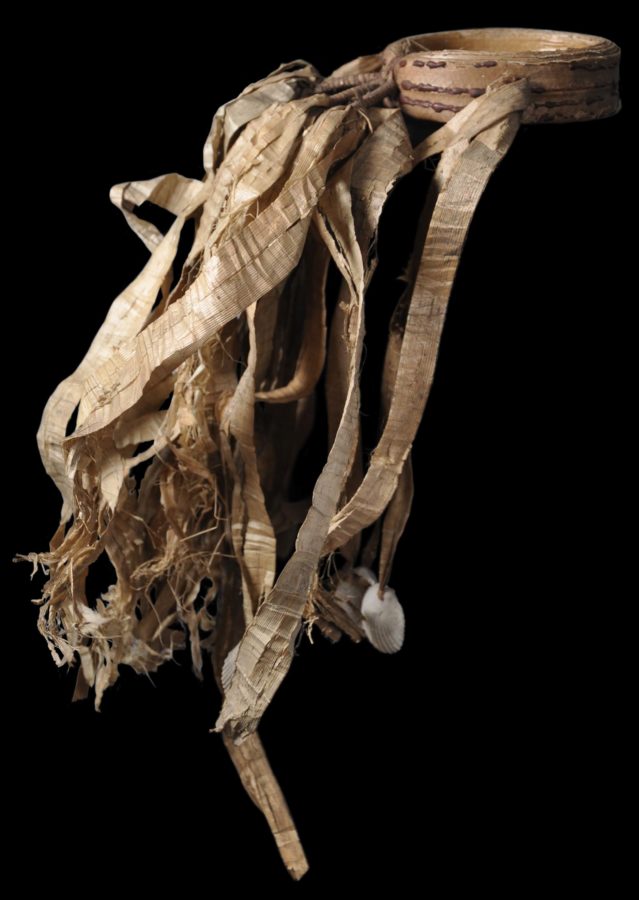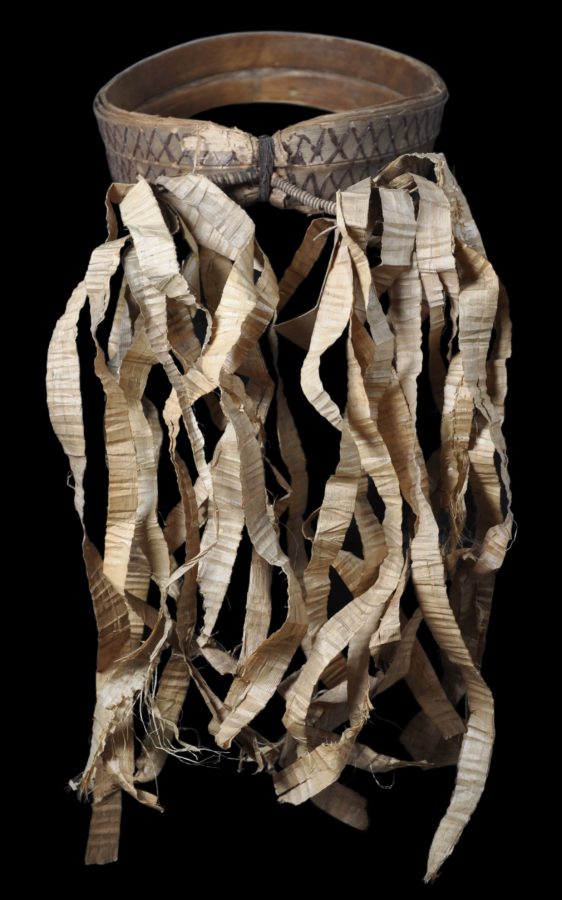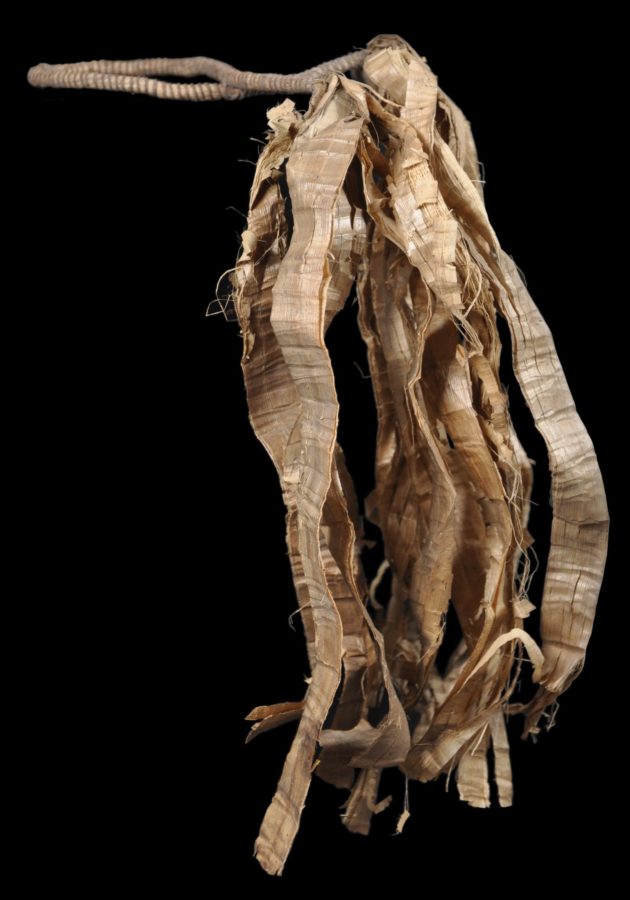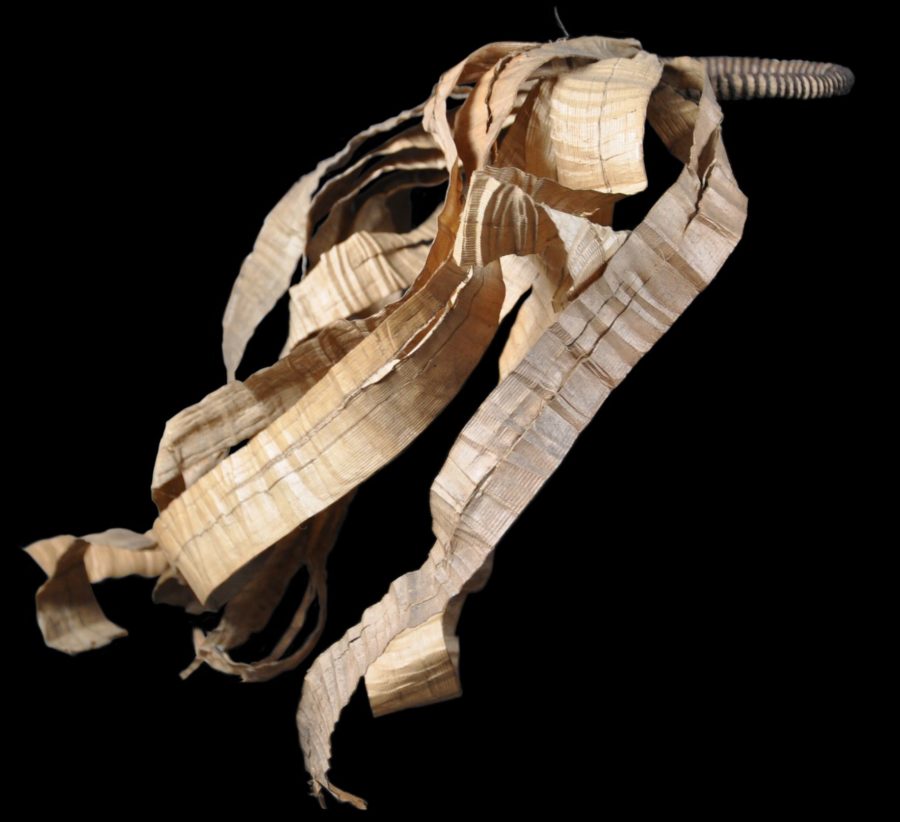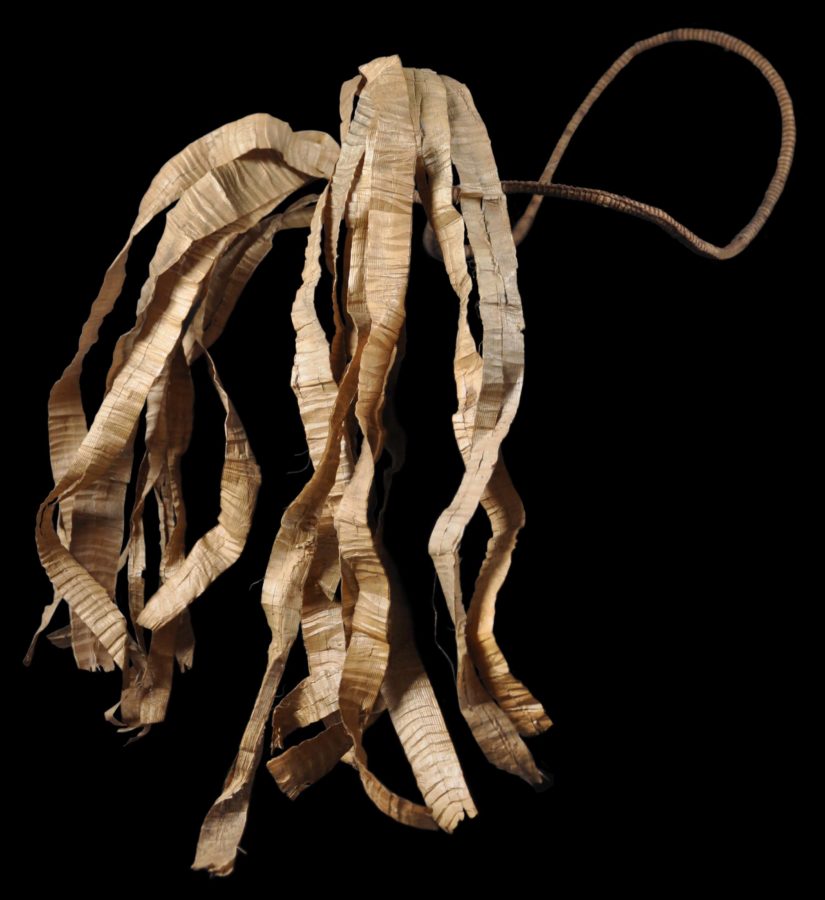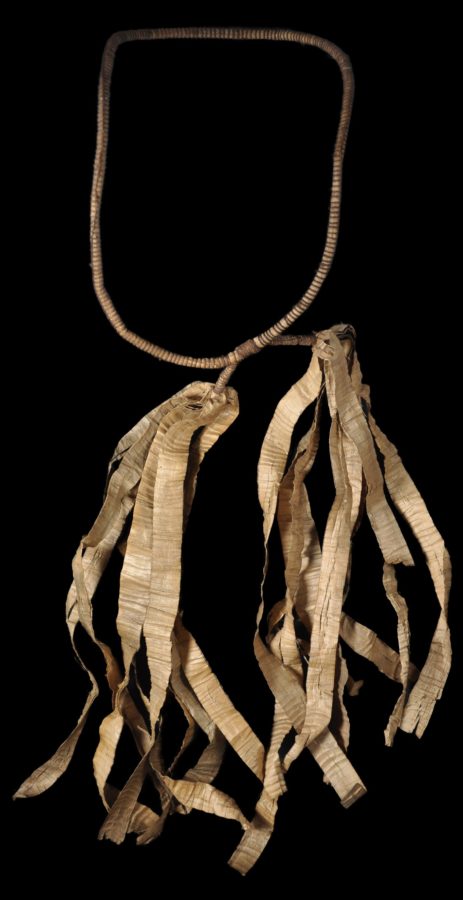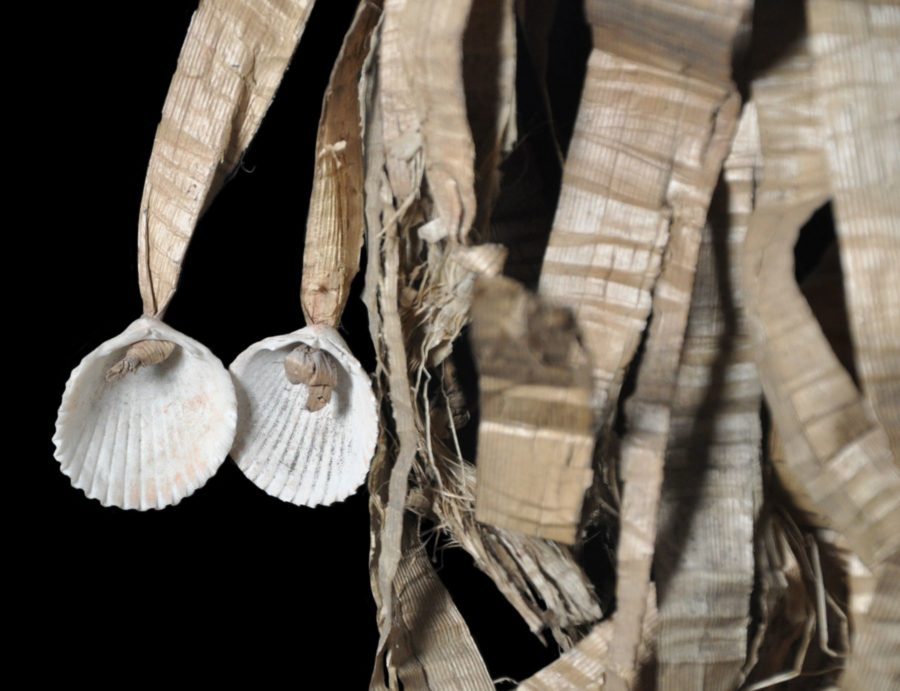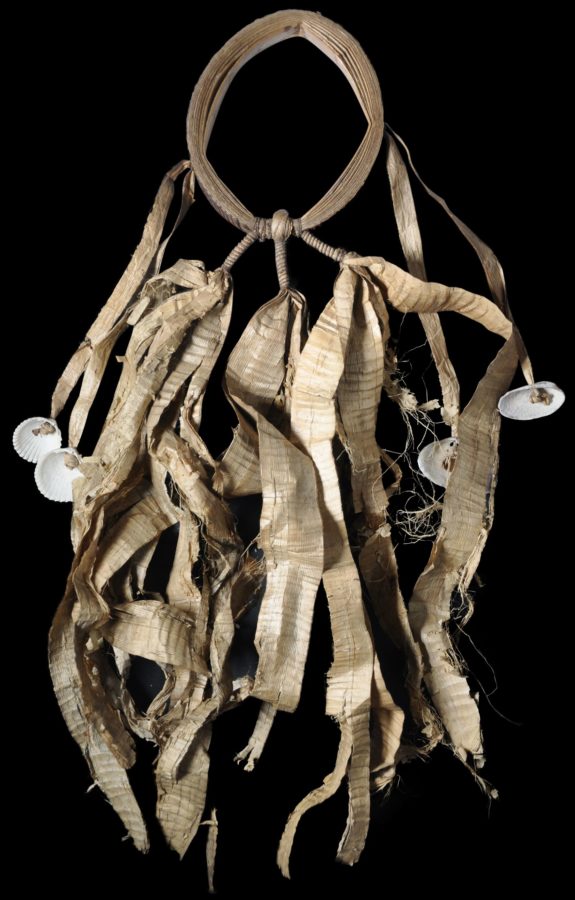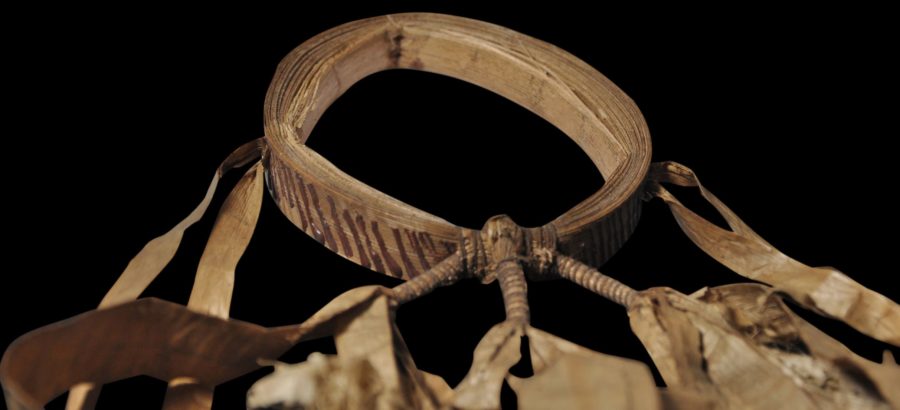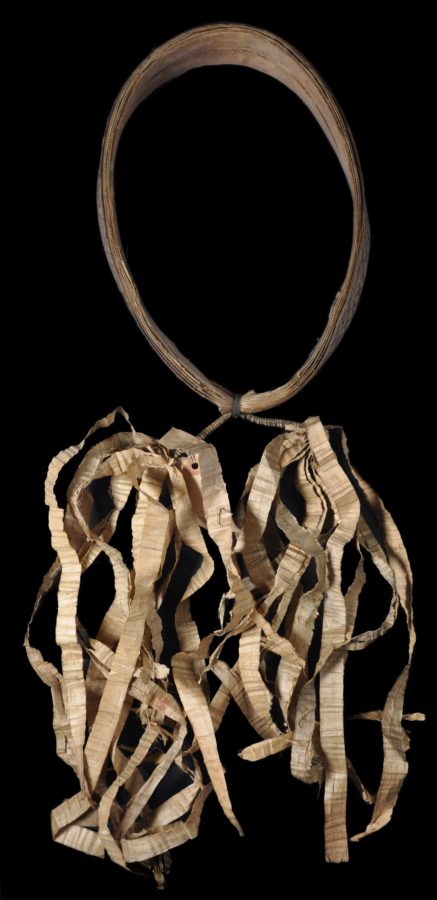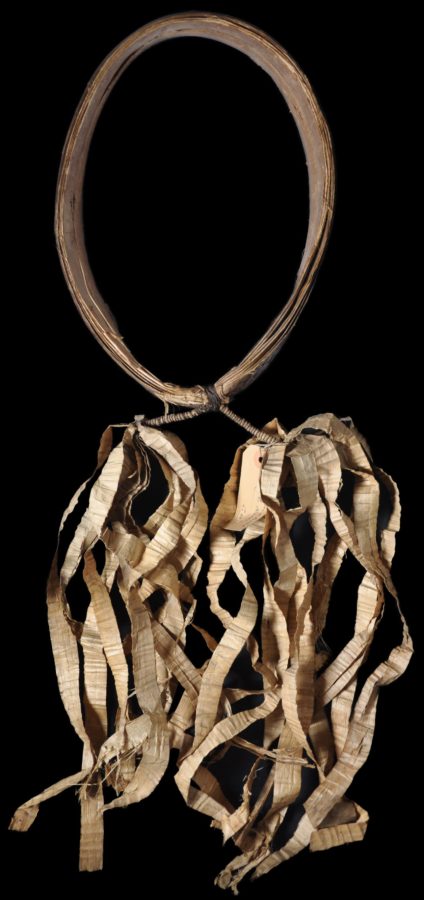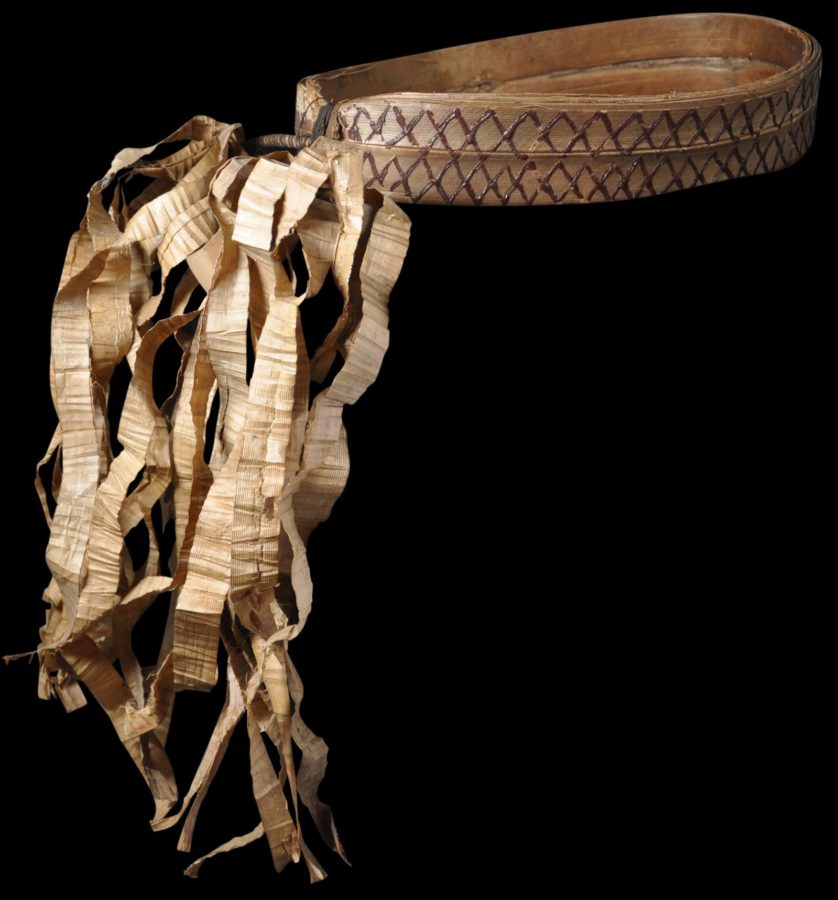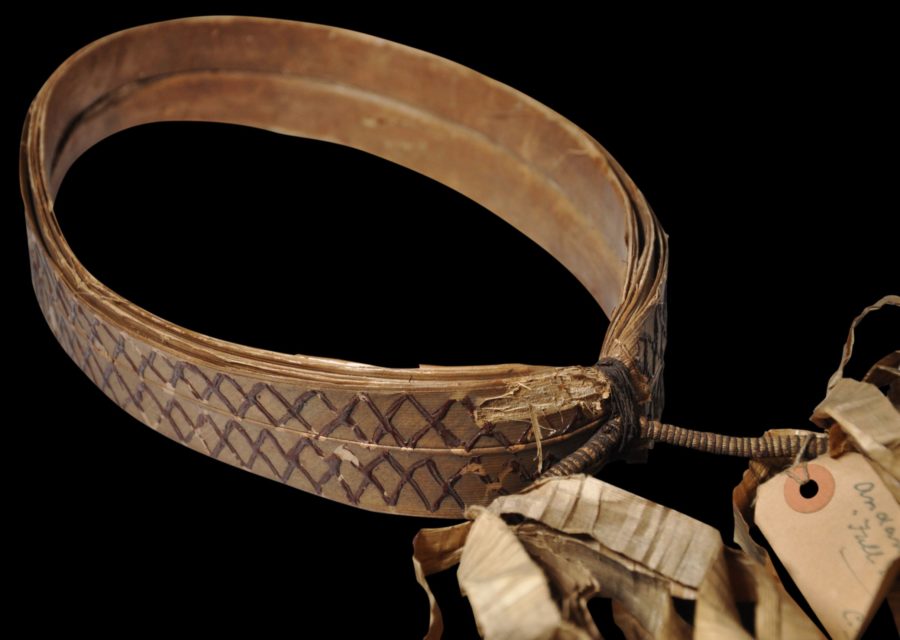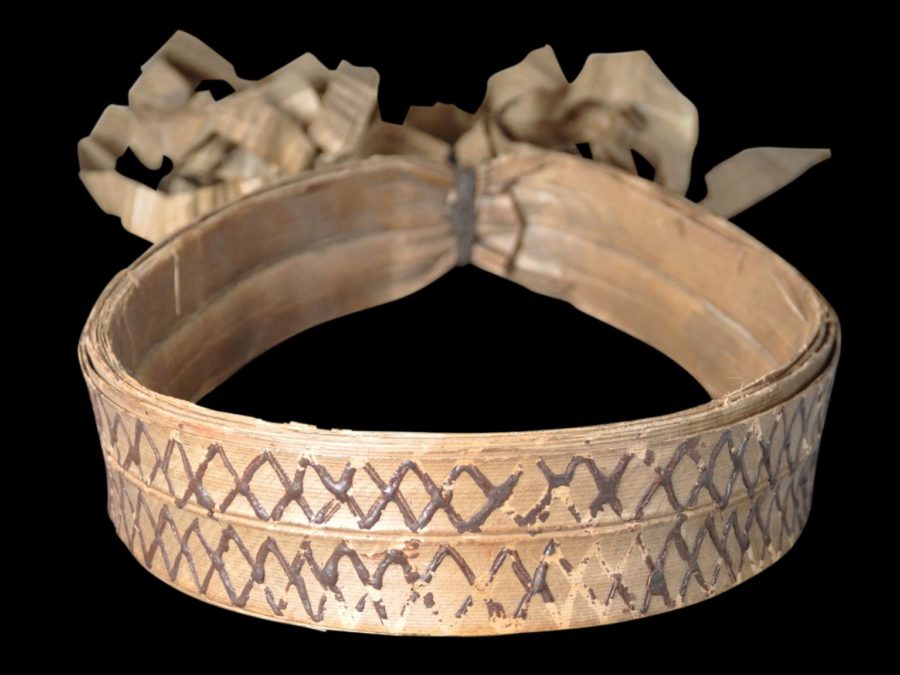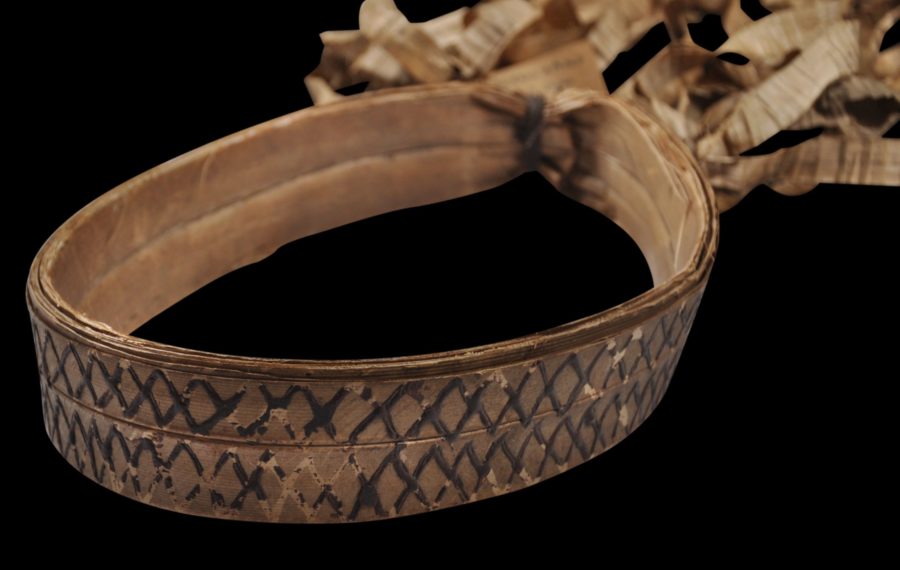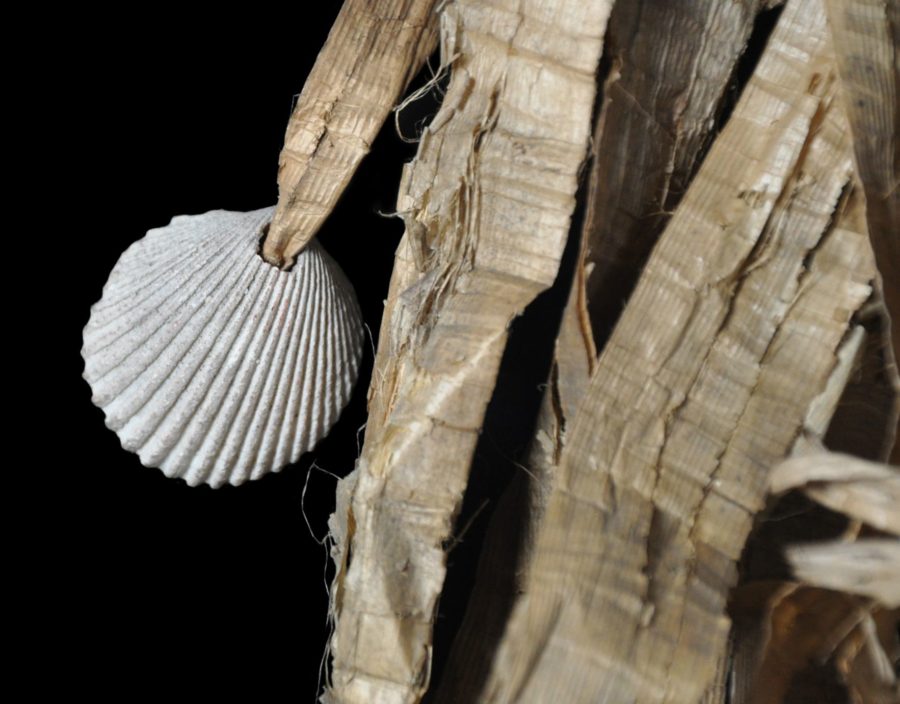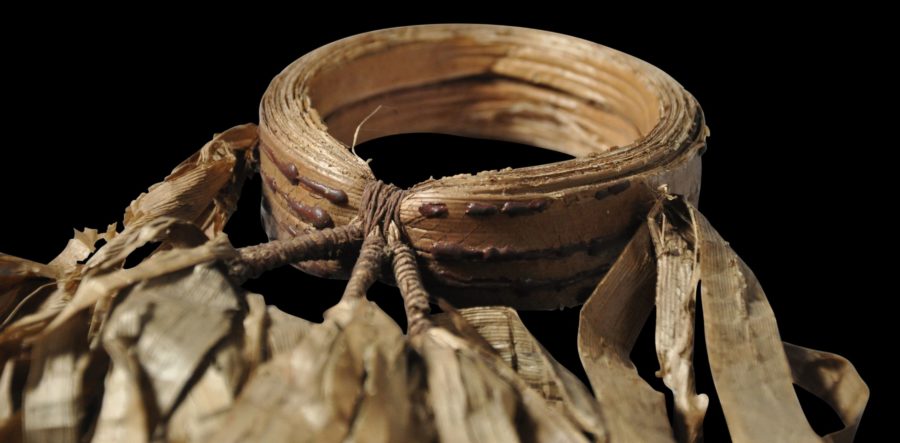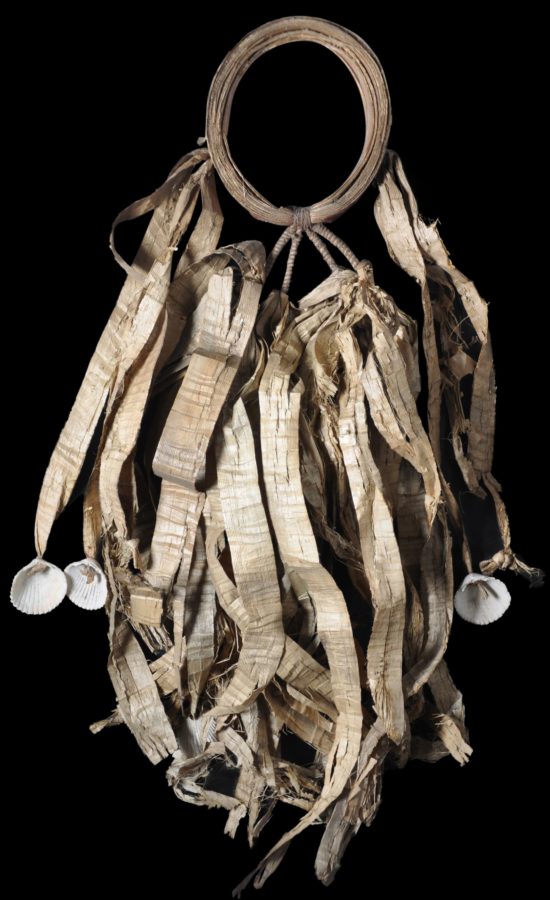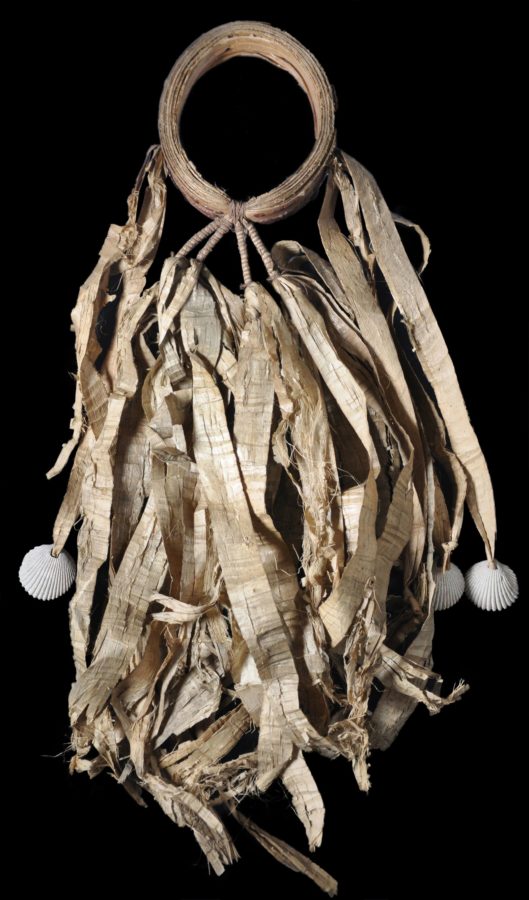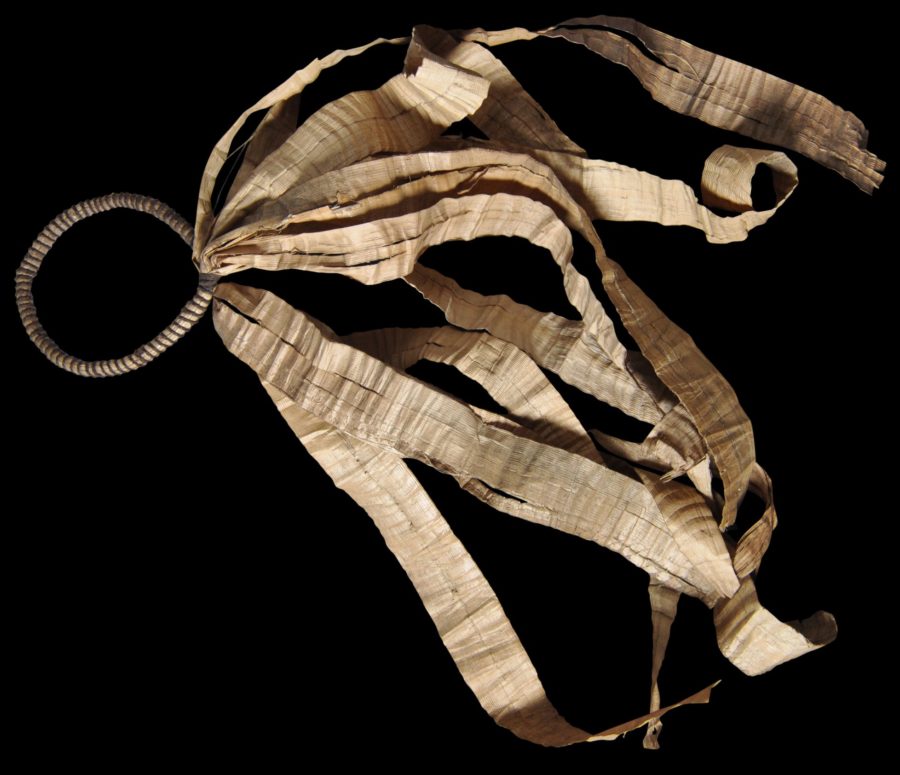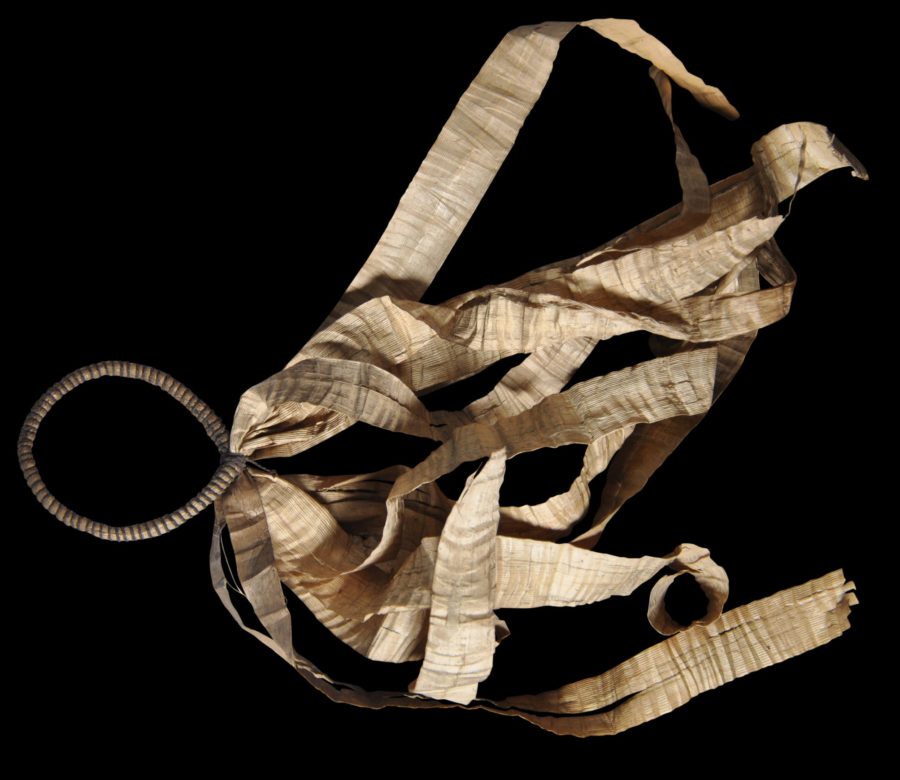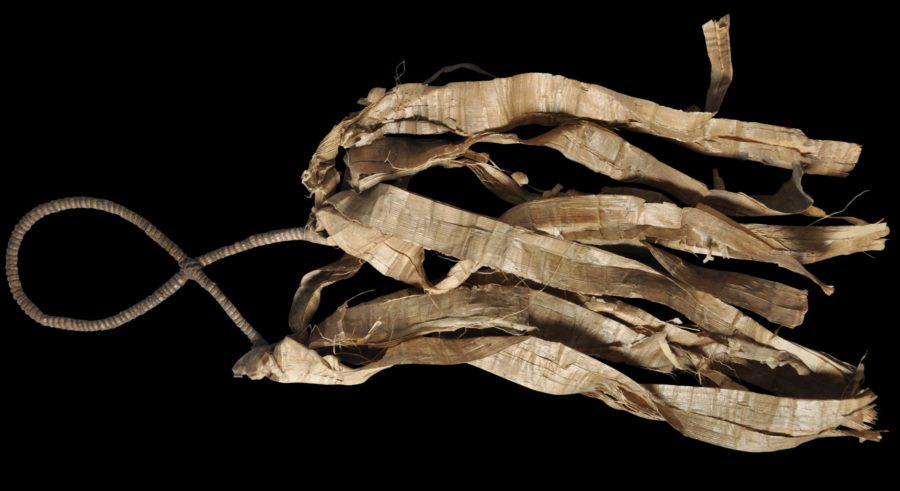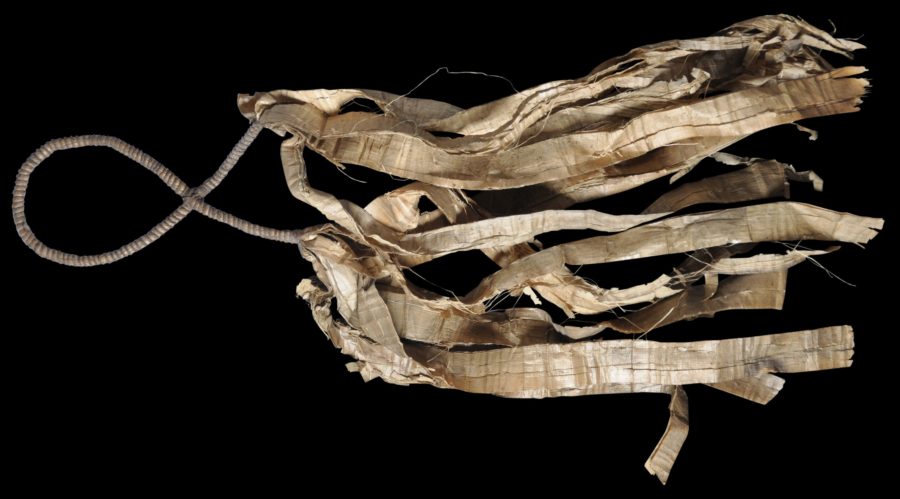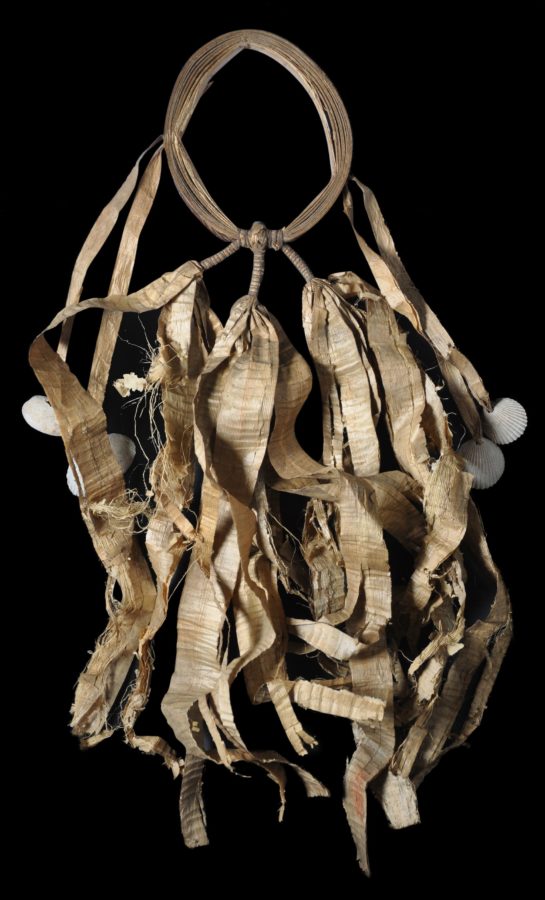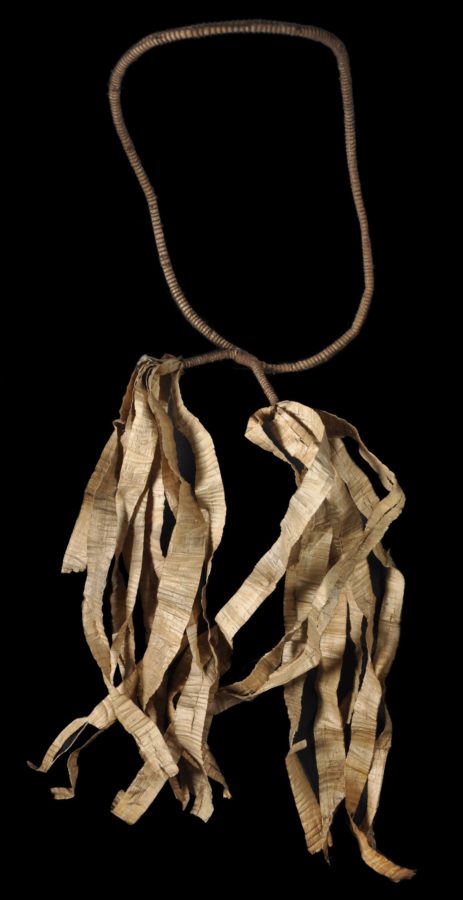Enquiry about object: 6521
Andaman Islands Man’s Dance Regalia
Andaman Islands, possibly from the Jarawa Tribe, South Andaman circa 1900
indicative length of headdress (band & tassels): 49cm
Provenance
private collection, London. UK; previously, Charles Wilfred Hext (b.1880-1919)
This extraordinary, complete set of an Andamanese man’s dance regalia comprises a headband, a waist or neck band, a pair or armlets and a pair of legbands. (The Andaman Islands are in the southeastern part of the Bay of Bengal and today are considered part of India but in fact are closer to Southeast Asia.)
Each element is made of multiple dried pandanus leaves suspended from a tightly woven band. The major bands have been decorated with geometric motifs in a thickly-applied red ochre probably mixed with wax, and several items are further decorated with suspended bivalve seashells.
The items were worn by senior men for ritual dance on dancing grounds known as bulum. Leaf bracelets, according to Man (1882) were known as togo chonga, leaf anklets or legbands were known as ta chonga, and the leaf headdress was called a iji-gonga.
The six pieces represent the most complete set of such items of which we know. Several museums including the British Museum have similar items but they tend to be random pieces rather than a matched group. (Many of the British Museum’s examples were acquired by the Museum in 1886 ad so were collected in the field prior to that.)
Similar items were presented to General Pitt Rivers in 1877 by the anthropologist-explorer E. Man who lived among the Andamanese for several year in the 1870s. These are attributed to the the Jarawa tribe of the Sentinel Islands in southern Andaman and are now in the Pitt Rivers Museum in Oxford, UK.
Our example was acquired shortly after and was in the collection of Colonel Charles Wilfred Hext (d. 1919) who served in India. Our set has attached an old Victorian-era label which, written in fountain-pen ink and probably in Hext’s hand, says: ‘Andaman tribe / ‘Full Dress’ – C.W.H.’
At the time of Man’s living among the Andamanese, Man estimated that the entire population of the Andaman Islands was likely to be no more than 4,000 and that of the South Andamans was about 500. The Andamanese were hunter-gatherers who subsisted on fish (that was speared rather than caught with hooks), turtles, pigs, and vegetables and fruits. There was a belief in a general overall deity called Puluya who needed to be appeased when there was thunder and during the monsoon.
The set is in very good condition. There are minor losses to the wax-ochre decoration, but essentially the items are in remarkable condition for their age.
The set came from the collection of Major Charles Wilfred Hext, who died at Raz-el-tin Military Hospital, Alexandria, Egypt, on July 21st 1919. He was born in India and served in the Indian colonial army, which is presumably how he acquired the Andamanese set.
Today, the Andaman Islands remain isolated and the Andamanese are largely shielded from the rest of the world. In November 2018, famously, a missionary from the United States, John Chau landed on the Sentinel Islands, which are part of the Andaman group, and was killed by the indigenous people, using a bow and arrow. The local tribal people are protected from contact with the outside world and visiting the Island is prohibited by Indian law. Indian authorities attempted to retrieve Chau’s body but without success.
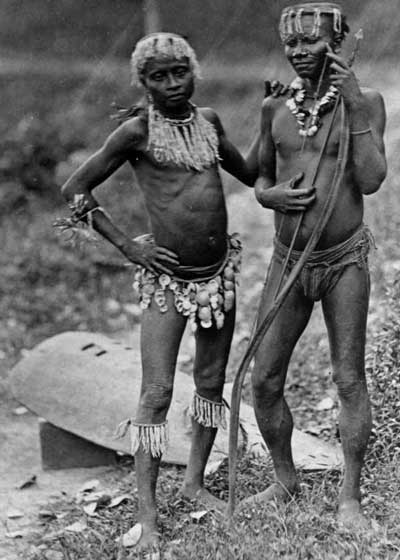
Two young Andamanese men, circa 1875.
References
Man, E.H., & Pitt Rivers, A., ‘On the Andamanese and Nicobarese objects presented to Maj.-Ge. Pitt Rivers, FRS,’ The Journal of the Anthropological Institute of Great Britain and Ireland, Vol. II, 1882.


